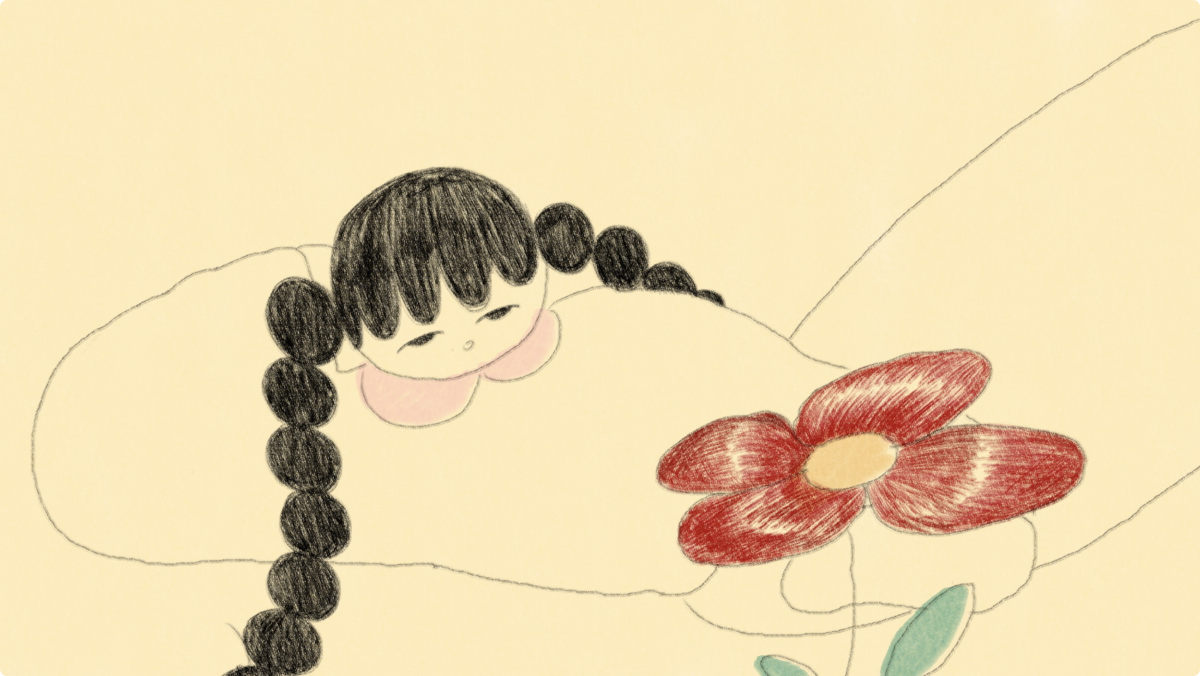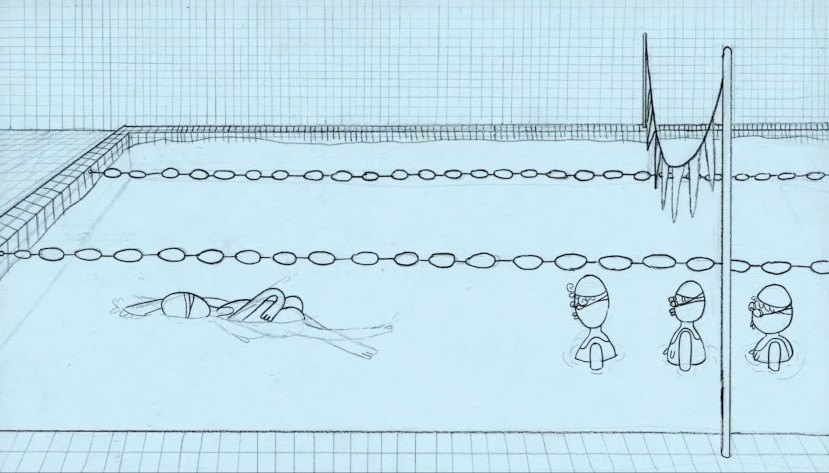Οrbit by Tess Martin
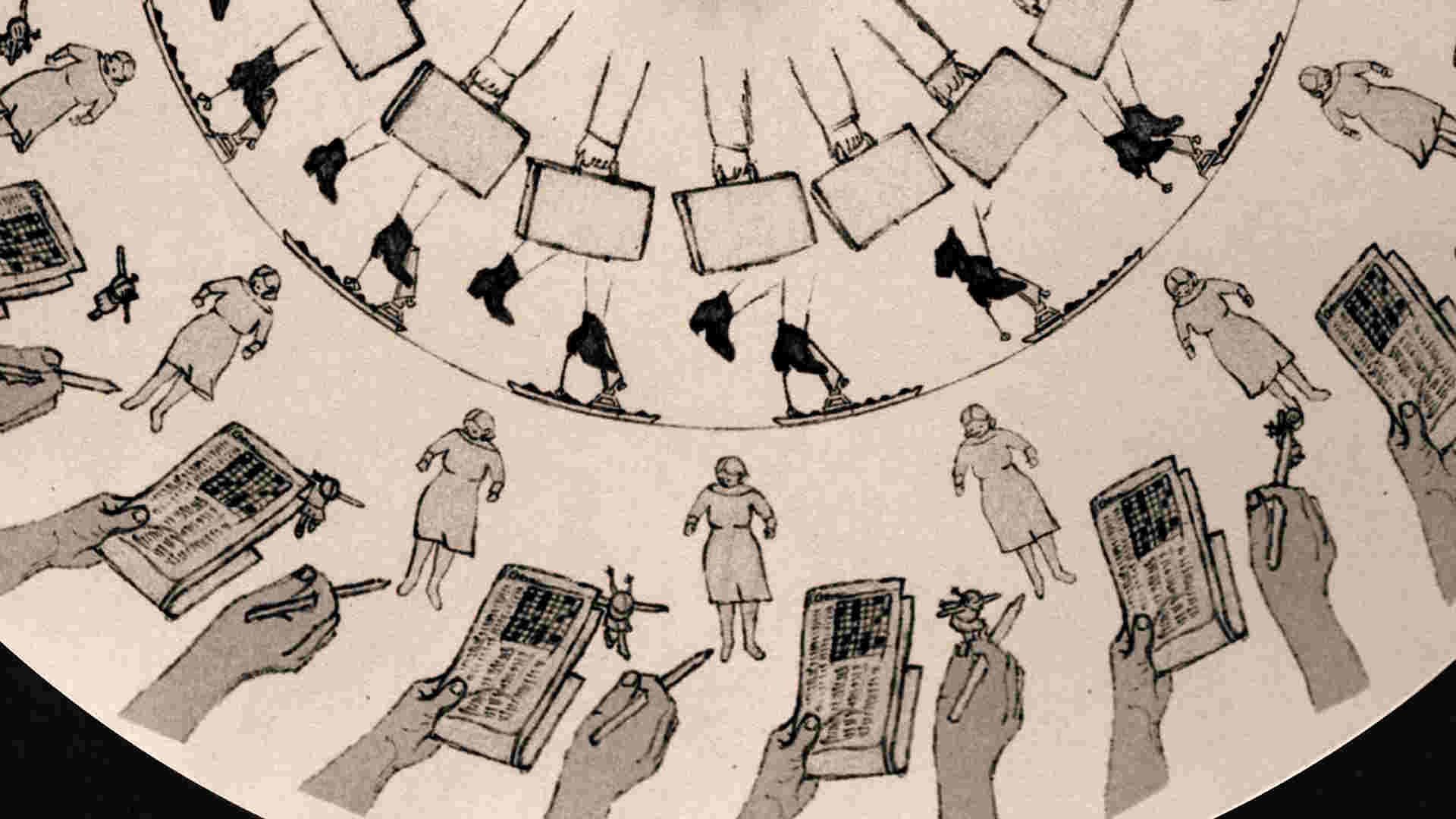
Orbit is a phonotrope project by Tess Martin about the relationship between humanity and the sun, and is more than a film itself. It consists of a 7-minute short film, an interactive installation, a flexi disc and a print series with associated animations.
With the concept of the sun's energy fueling the cycle of life (and humanity's place within that cycle), the short film had its festival premiere at the Rotterdam International Film Festival in January 2019, and the interactive installation was first presented at WORM UBIK in Rotterdam in April 2018.
Watch Orbit by Tess Martin:
It goes without saying, it is really interesting to learn how both the concept of the sun and energy, and the referencing of optical toys worked together as a whole. As Tess Martin tells Zippy Frames, the concept of the sun and its energy came first, arising from discussions Martin had with Jason Staczek (also the film's composer). Big issues like the misuse of energy and the future of our own planet gradually gave way to a central question, the ultimate source of all of our energy.
"I started to realize how everything that makes our world tick is due to the sun" Tess Martin elaborates. "Plants exist because they turn the sun’s light into nutrients. Animals exist because they can eat plants, etc. We can burn fossil fuels because plants were there to create them. Nuclear energy was created by humans who owe their existence to the sun's energy. Even waves happen because the sun heats up the ocean, and the different temperatures of the water cause it to displace. From the sun’s point of view, we are just a very recent dominant species on the planet - we are just part of an eons-long cycle, and if we screw it up, it won’t make much difference to the sun".
This, in turn, led to the idea of cycles and loops -from how the sun's energy cycles through the planet to how the Earth cycles around the sun. Martin is herself an animator specializing in hand-made techniques (and optical toys are the start pack of every animator's educational background). So, in Orbit, "it was only a hop skip and jump from there to zoetropes and phenakistoscopes, where the animation literally rotates around a central point".
But getting a concept firmly in place did not preclude revisions. "The project had different formats at first" Martin explains. "At one point, I was thinking of using one long spiral of sequential imagery bolted to a wall, if I remember correctly. But eventually I settled on horizontal discs with rows of animation of various complexity filmed by a camera pointing downwards. It seemed appropriate for the animation to be physically rotating as we watch it."
The whole creative project (short film, installation, prints) was completed -on and off- over 4 years. Two month-long residencies helped the director to develop the concept and figure out the technical aspects plus time was spent to apply for funding and completing the needed storyboards. "I probably spent a total of 6 months making the animation with pencil on paper, scanning the drawings, printing the discs and testing them, etc." Martin explains. The director simultaneously presented the interactive installation (3 big discs, fewer than the amount of discs in the film) at a group show in Rotterdam (also shown at Turku Animated Film Festival, Finland 2019).
Watch her tutorial on the phonotrope technique:
As always for independent animation, funding was a big issue. "I probably applied for a dozen different grants" Tess Martin mentions, "finally gathering around 40,000 euro total from, primarily, the Dutch Stimuleringsfonds and, more recently, the Dutch Film Fund. The Centre for Visual Art in Rotterdam and RooftopFilms were also early funders". Yet Martin believes that the delay actually ended up improving and perfecting the film.
The film is broken into 3 rough sequences: an introduction, a more literal evolution sequence and a part where humanity 'takes over the system'. "In the introduction, we see a variety of short simple loops, indeed sometimes co-existing: animals, plants, humans. After all, this is how we are today, everything together" Martin explains. In the middle part, we see the three ‘big’ discs (where the camera pans down across the discs) which point to a more literal evolution ("from life in water, to land, to humanity"). Then there is a third part where humanity takes over the system (and we can see this 'blocks the light' from the deer, rendering it fuzzy). But I wasn’t super hardcore about it, it was also a bit instinctive".
When all the animation and discs were ready, the actual shoot for the film didn't take long - two days were spent with a professional cinematographer. Almost one week was additionally spent on editing. Since Jason Staczek was already involved with the project from concept development, Martin only had to ensure that they were on the right path emotionally (the score was completed in one month's time). Both the composer and Martin went for a progression concept: "At the beginning it’s very rhythmic, and mostly sound effects, with just a hint of a heartbeat. It then becomes more melodic and includes more string instruments, until the human sound effects take over again, and then it devolves into primal sounds at the end".
Orbit is not just a film, but a whole experience: a short film, an interactive installation, a series of mono prints that also have short (soundless) videos made from them, and a flexi disc. Note to non-initiated: a flexi-disc is a flexible card record that contains a version of the soundtrack and one of the big disc designs: people can play the flexi on their home turntable and film it at the same time on their camera, getting an auditory and visual experience at once. [here's how to obtain it]
All these different iterations came naturally to this project; the zoetropes/ phenakistopes Martin is here referencing were already interactive. "It seemed a shame not to have a version of the project that people could play with as well" Martin explains. "The prints I’m also proud of, because the circular designs are part of an aesthetic design, but actually, if you look closely, they contain animation within them, almost like trapped energy. These movements can then be revealed if the print is scanned and rotated. I think of the prints as kind of static versions of the discs, which are also quite graphic on their own."
Audience feedback revealed engagement. "Some people get really caught up in the technical aspect (how does it work? what frame rate, etc), others I think just enjoy watching the loops. There is usually a nice ‘a-ha’ moment when people realize that what they are seeing in the little screen is actually on the blurry disc beneath the screen".
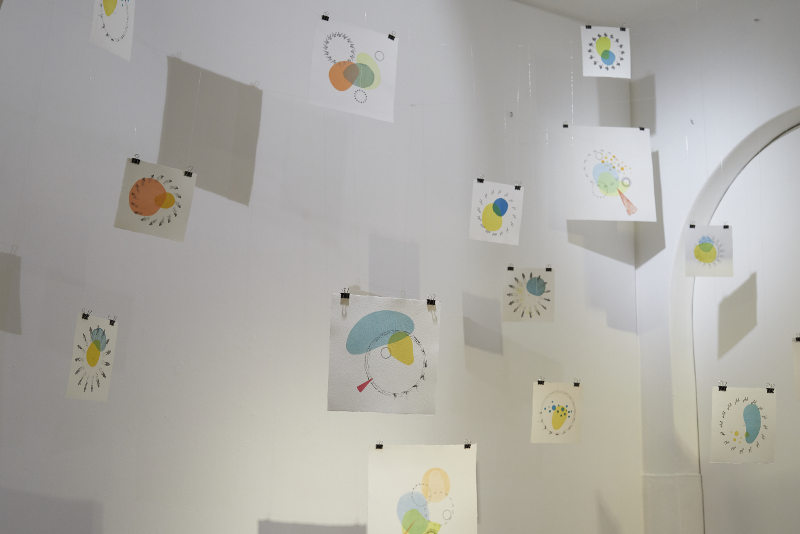 Orbit Exhibition: Photo by TAKAHASHI Kenji, courtesy of Tokyo Arts and Space
Orbit Exhibition: Photo by TAKAHASHI Kenji, courtesy of Tokyo Arts and Space
But does this expansive approach of animation reflect a 21st century conception of an animation work? Tess Martin certainly does not expand her work in this way as a matter of course, even though it's nice to have something to exhibit in a gallery. "I don’t necessarily think this is something animation should do, but I am interested in how I can explore different physical spaces or mediums within the same work. It’s kind of like world-building. The formats may be different, but they are all related to the same concept. And each version scratches a different itch, tickles a different part of my brain".
Tess Martin envisions a different approach and atmosphere for each of her films. In Ginevra, she used a poetry piece for inspiration, and animated paper cut-outs. "In this way, I end up doing something at least slightly different each time, which I find more interesting as well". She has recently completed a commissioned film for an author in a completely different technique, charcoal animation.
At the time of writing, the Orbit installation, prints and short film are on view at the Tokyo Arts and Space Hongo gallery until February 9th; Tess Martin is also there, working on the script for her next short (a more narrative science-fiction film).
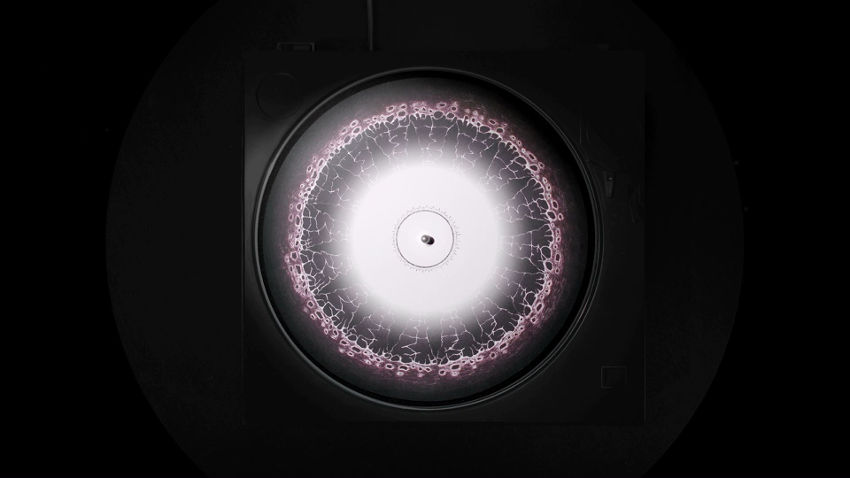
Film Review (Vassilis Kroustallis):
The mythology of the sun is very ripe in all cultures and traditions. Tess Martin here cleverly removes all global narrative cloths that could hurt her film, and concentrates on the loop itself, and its effects, as if the sun was a DJ scratching (left and right) the global turntable. Orbit is certainly a work that needs to be re-watched in multiple viewings, for it won't simply tell a story of environmental urgency; it instead restructures the issue by using both domestic (cats) and wild (animals), referencing human intellectual practices (such as crosswords and puzzles), and sun-related practices (linen hung out to dry, children with melting ice cream). These tropes and their dance build up the argument about our uneasy cohabitation with nature - and yet a return to a pre-human land is not a human option. The film's sound and music, from almost non-existent, progressively becomes majestic, and blurry vision is accompanied by more chaotic sound impressions. Orbit makes a competent case that a form of play and reshuffling is necessary to give a new look (and loop) to existing things.
About Tess Martin
She is an independent animator based in Rotterdam who works with cut-outs, ink, paint, sand or objects. Her work often blurs the boundary between experimental and narrative, animation, film and art.
CREDITS
Orbit, Tess Martin (The Netherlands, 2019, 6' 19'')
Production: Tess Martin
Distribution: Bonobostudio
Music: Jason Staczek | Camera: Matija Pekić
Funded by: Netherlands Film Fund, Stimuleringsfonds Creatieve Industrie, Rooftop Films, Centrum voor Beeldende Kunst, Gemeente Rotterdam, I-Park Foundation, Djerassi Resident Artist Program





